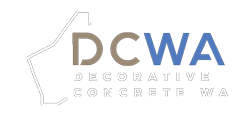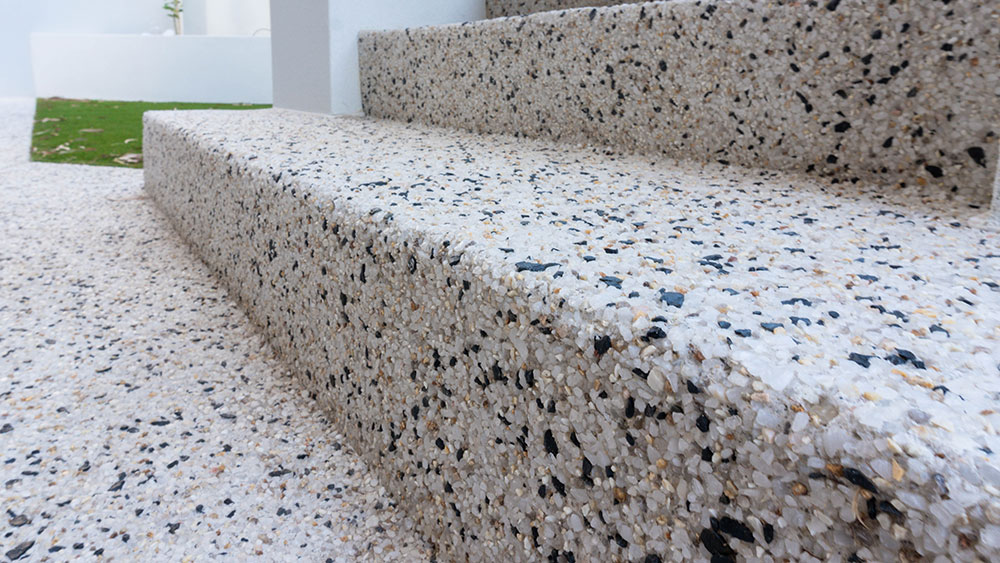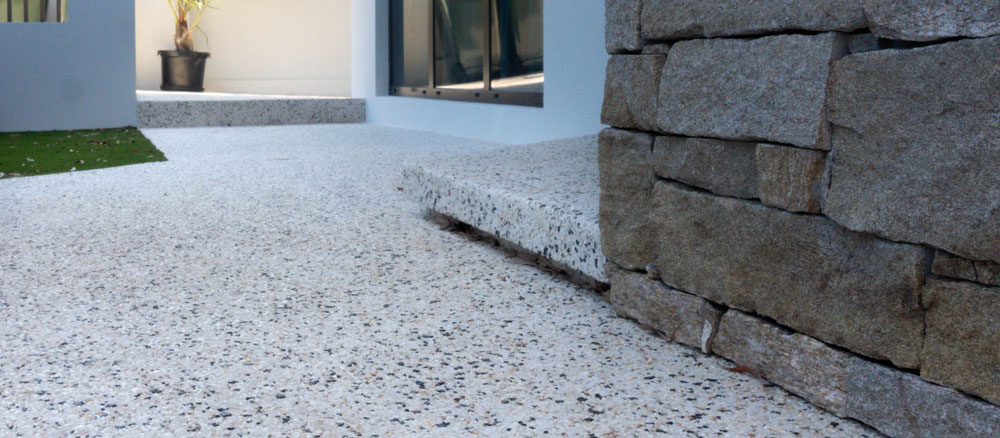Trends: The Best Styles and Looks in Decorative Concrete for 2020
- March 19, 2020
- Written By Levi Saunders
- Design Trends
In case you have not heard, concrete no longer has one look. It may be grey in most cases, but you can turn the material into something more attractive. You do not have to avoid concrete anymore if you want to create a lively and bright surface.
Decorative concrete makes it possible to have beautiful designs that can make your property stand out. This benefit is extremely useful, especially for businesses. If your customers find your office or store glum-looking, it is time to spice it up a bit. Just a few floor upgrades and the whole environment can change in looks and personality.
The year 2020 has already started, and trends have emerged. Some are from last year and have endured the discerning tastes of customers. If you want to venture into decorative concrete, here are the top trends that you can expect to see more of this year:
-
- The Most Popular Types of Decorative ConcretePolished concrete are is one of the most used decorative concrete. But concrete overlay and coloured concrete are also widely used. Grey or standard concrete is usually found in warehouses and industrial applications.
Decorative concrete, no matter which type, can be used in footpaths and driveways. Concrete is more usable in these areas because it is cured and strengthened when transformed into any decorative form. It can also be applied on other surfaces that accept constant heavy foot traffic, such as patios. Some companies choose decorative concrete not only for their floors but for walls as well.
- Unique Looking SurfacesDecorative concrete is a hot trend on its own. It can be used in all types of surfaces and comes with varying designs and methods. For instance, acid staining is on the rise again. Originally, acid staining was one of the very first solutions for decorative concrete. It involves the use of a coloured liquid, which will be applied on the surface.
The liquid or stain will cause a reaction with the existing minerals in the concrete surface. This reaction leads to a unique look that both residential and commercial properties want.
If you aim to have natural earth tones for your flooring, acid staining is one of the simplest ways to achieve it. This solution lets you have a surface that resembles marble or even natural stone. The only difference is that you do not have to shell out a ton of money to attain the look.
- The Most Popular Types of Decorative ConcretePolished concrete are is one of the most used decorative concrete. But concrete overlay and coloured concrete are also widely used. Grey or standard concrete is usually found in warehouses and industrial applications.
-
- Concrete OverlaysGone are the days when people used to strip off all their flooring to get rid of the old one. If the floor just cracked and seemed irreversible, the only solution is to install a new surface. With concrete overlays, everything got easier. It is why businesses turned to this method when their concrete floors gave up.
Overlaying involves the installation of a thin film. It is placed on top of the old or damaged surface. After the service, you will be glad to know that there is no sign of the impaired floor anymore. You will only see a cover that looks brand new. Unlike installing new floors, you get to save more money when you choose a concrete overlay. The results are also faster. If you are running a business, you can get back to normal operations in no time.
- Weather ResistanceConcrete is durable. It can last years with minimal maintenance. However, one big problem about the material is its inability to resist harsh weather conditions. While it can withstand rains, snows, and the hot sun, continuous exposure can lead to cracks and permanent damage. It is why concrete is mainly used indoors – except if you are willing to spend extra on maintenance and repairs.
Then, decorative concrete came along. When you reseal the floor once every year or two, it preserves the beauty and sturdiness of the surface. At the basic level, concrete sealers keep out moisture. They also protect the surface against stains and wear. Sealers provide extra protection for decorative concrete so that it can survive high traffic.
If it fades, you can say it beats the purpose of being decorative. After all, a stonewashed or worn look is not attractive, especially for commercial spaces. It also does not exude professionalism because it can lead a customer to believe you neglect your property. If they think you do not care much about the area, it can mean you will not serve your customers well.
Weather-resistance is essential for commercial property flooring. If your area often rains or is almost always sunny throughout the year, your floors need protection against these harsh weather conditions. Decorative concrete can give you this advantage. Even better, it is resistant to fire, stains, bacteria, and putrid odours.
Even if the weather keeps changing and humidity is high, you will not have a lot of issues with this flooring type. Also, cleaning and maintenance should not be a concern.
- Other ApplicationsDecorative concrete for outdoors has always been around, but it has become increasingly popular over the years. The expression “hard as concrete” proves that this material is resilient, making it the perfect choice for outdoor flooring.
Concrete for patios and walkways can be useful if you are going for a specific look. Pouring concrete is possible into any pattern, form, and colour you want. You can even create stone-like shapes with the material.
One of the latest trends with decorative concrete, however, is customising its look to an au naturel surface. Standard grey concrete, for instance, is in. Because it does not have that polished or shiny look, grey concrete can hide imperfections, such as stains, easily. Plus, it gives that natural look that complements any landscaping design you may have outdoors.
Of course, if you wish to have a higher depth of colour for the surface, decorative concrete allows you to achieve this goal as well. You can also give the surface a little bit of texture, allowing you to dress up the flooring however you want.
Some types of decorative concrete, especially polished concrete, can have that classic soft look. The floors then give an appearance that can be mistaken as a sign of weakness. It is why some people think that decorative concrete cannot be used in high traffic areas, as well as garage floors.
Garage or parking spaces accept heavy vehicles. Therefore, the flooring should be sturdy enough to survive the constant beating of cars going in and out of the area. Decorative concrete, including exposed aggregate, is one of the top choices for garage floors. Despite the heavy loads, this innocent-looking surface is durable and long-lasting. It can even resist stains and scratches.
Decorative concrete has also become one of the most widely used flooring types for external ramps and walkways. The aesthetic effect and resilience make concrete the right material for these outdoor areas.
Although concrete has been used as a pool bullnose material, it is only recently that it became the top option for Australian swimming pools. Decorative concrete for pool decks and coping or surround provides that seamless transition. There are no break lines that you can see in other materials. The finish around the pool is unbeatable, especially considering the price and functionality.
- Exposed Aggregate for All SpacesBricks were among the most popular for driveways and walkways. They are considered cheap and relatively durable. However, when the benefits of exposed aggregate were “exposed,” more Australians and other people around the world go for this technique instead.
Today, exposed aggregate has surpassed bricks and many other materials in popularity. Alfresco, school areas, and even driveways look more presentable with exposed aggregate, which involves the use of aggregates or solid components. These materials are mixed into cement and water to reveal textured and unique-looking flooring.
Aggregates make this decorative concrete type more versatile. They can be composed of limestone, granite, and marble, among many others. On top of these options, they are crushed into different grades, creating a personalised appearance.
If you are looking to customise the area more, exposed aggregate is the best choice for you. Aside from the long list of aggregate selections, you can also control the texture of the surface. You can even have the concrete coloured during the manufacturing process. This way, your driveway or any other area can have a more vibrant hue.
Exposed aggregate is not only used in residential properties, but also hotel corridors, plazas, sidewalks, and commercial parking lots.
- External Areas with Honed Aggregate ConcreteAnother type of decorative concrete making waves for outdoor spaces is honed aggregate. It is a favourite of contractors for new buildings, as well as renovations and commercial sites. Honed aggregate is often confused with polished concrete. In a way, they do look similar, except polished concrete is more used indoors.
For honed aggregate concrete, this flooring type is not only attractive but durable as well. The big difference between polished concrete is that honed concrete does not use the densifying method. In its place, polishing and buffing will achieve the sheen you wish to go for.
Just like with other decorative concrete forms, honed concrete requires a few grinding stages. After them, a sealant will be applied to reinforce the surface. At the same time, this method also gives the area a much brighter and shinier look. Even if it does appear glossy, it does not have that blinding effect. It is more natural-looking while offering slip resistance. You can also opt for a matte honed aggregate look.
Aside from being attractive, honed aggregate flooring is easily maintained. It is one of the reasons why many people go for this type of decorative concrete.
- Concrete OverlaysGone are the days when people used to strip off all their flooring to get rid of the old one. If the floor just cracked and seemed irreversible, the only solution is to install a new surface. With concrete overlays, everything got easier. It is why businesses turned to this method when their concrete floors gave up.
- Polished Concrete in Commercial PropertiesPolished concrete is arguably the most popular type of decorative concrete, particularly in the commercial realm. For the last five years or so, polished aggregate is the hottest finish there is. With the growing number of residential and commercial properties that use it, there are no signs of it slowing down.
Concrete is seeded with various aggregates, which can be in the form of coloured glass and pebbles. There are many options here, just like with the other types of decorative concrete. Nevertheless, polished concrete has a defining design. It appears like the traditional terrazzo without the hefty price. It also performs similarly as the expensive flooring because of its durability and weatherproofing capabilities.
Polished concrete can have colours and unique designs. However, even with these options, plain grey remains the most popular. It is minimalist yet exudes class. For this reason, polished concrete has become the preferred option of homeowners, store operators, and other businesses.
Decorative Concrete Trends in the Coming Years
In the decorative industry, trends come and go. Due to quality and creativity, concreting variations have been replicated over the years. Concrete, including the decorative variety, allows contractors to push their boundaries. Many years before, concrete was merely grey and lack that uniqueness people look for. Despite that, it was a commonly used material in building homes and commercial structures.
Years will pass, and the trends today may remain. However, one thing is for sure. Decorative concrete will stay, especially because green building materials have become the most sought after. Being an eco-friendly material, you can be sure that choosing decorative concrete will be one of the best decisions you have ever made for the years to come.
The team at Decorative Concrete WA would love to talk to you about what would be best for your concrete project, get in touch with us today.


